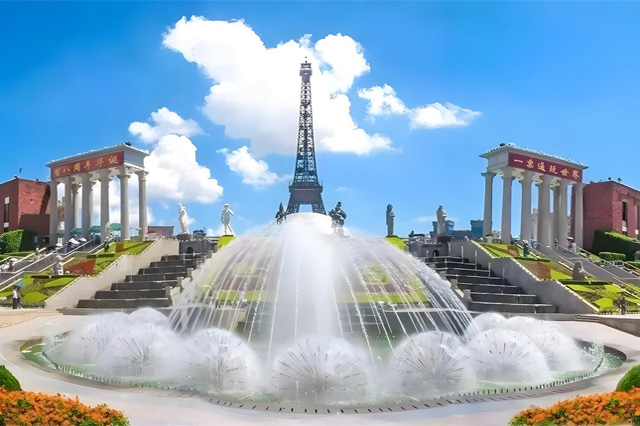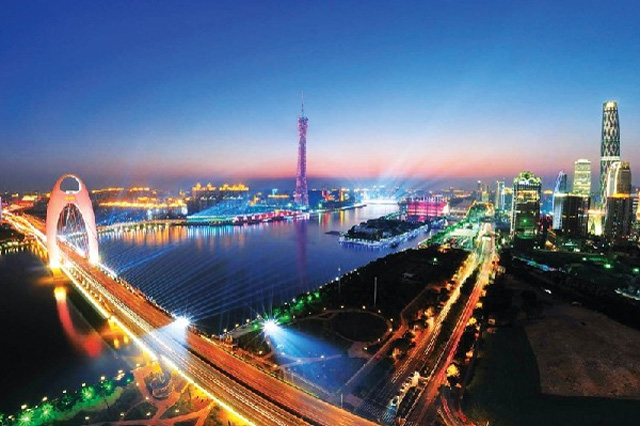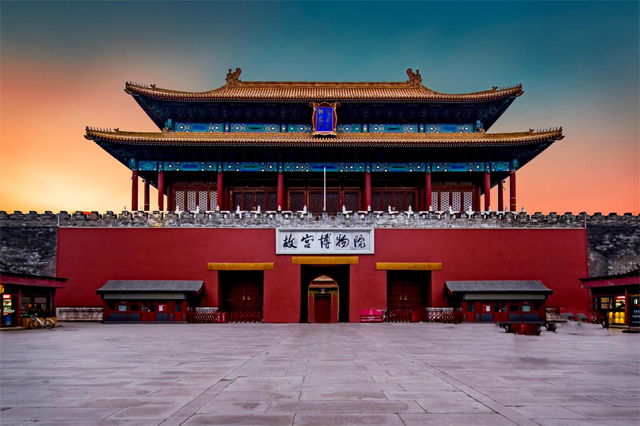May Day Travel Strategy: Select Zhejiang 5A Tourist Attractions for You to Play with the River!
- China Tourism
- 2025-04-24 12:16
- 79
Zhejiang Province, referred to as "Zhejiang", is located in the southeast coast of China, the south wing of the Yangtze River Delta. Qiantang River, the largest river in Zhejiang Province, is called Zhijiang River, also known as Zhejiang Province, because of its tortuous flow. Zhejiang Province is one of the birthplaces of ancient Chinese civilization and excellent Chinese traditional culture. There are Neolithic cultures such as Liangzhu Culture, Hemudu Culture, and Majiabang Culture, and regional cultures such as Wuyue Culture, Jiangnan Culture, and Song Yun Culture. Next, the editor will bring you the May Day travel strategy: select Zhejiang 5A tourist attractions for you to play with the river!
1. Hangzhou West Lake Scenic Area
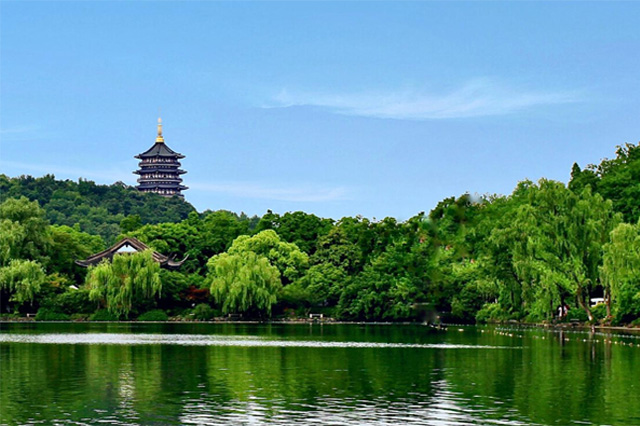
Hangzhou West Lake Scenic Area is located at No.1 Longjing Road, Xihu District, Hangzhou City, Zhejiang Province, China. It is a national AAAAA-level tourist attraction and a world cultural heritage. There are more than 100 scenic spots in West Lake, among which "Ten Views of West Lake", "Ten Views of New West Lake" and "Three Comments · Ten Views of West Lake" are the most famous. In the course of the development of the cultural landscape of the West Lake, literati such as Bai Juyi and Su Shili left a large number of poems here, and local myths and legends such as the Legend of White Snake and the Legend of Liangzhu spread. The cultural and historical sites in the scenic area have witnessed the development of Buddhist culture, Taoist culture, tea Zen and other cultural traditions that have been passed down in China.
2. Yandang Mountain Scenic Area, Wenzhou City
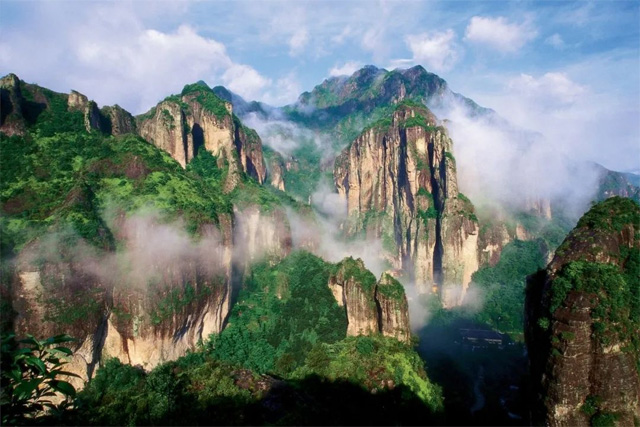
Wenzhou Yandang Mountain Scenic Area is located in Yueqing City, Wenzhou City, Zhejiang Province. Part of it is located in Yongjia County and Wenling City. It consists of three independent areas: Yandang, Zhongyandang and Nanyandang. Yandang Mountain is famous for its beautiful landscape, known as "a famous mountain on the sea and a great victory in the world", also known as Yanyan and Yanshan. Because there is a lake on the top of the mountain, the reeds are dense, the grass is swinging, and the autumn geese in the south stay here, hence the name Yandang. Yandang Mountain Scenic Area is a typical representative of Cretaceous volcanoes in the giant volcanic belt on the Asian continental margin, and rhyolite in magma has become the main geology of Yandang Mountain.
3. Putuo Mountain Scenic Area, Zhoushan City
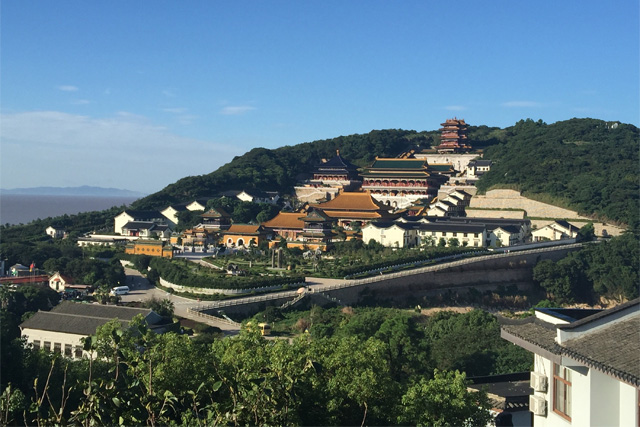
Putuo Mountain Scenic Area in Zhoushan City, referred to as Putuo Mountain Scenic Area, is located about 100 nautical miles east of Hangzhou Bay in Zhejiang Province. It is a national AAAAA-level tourist attraction, one of the ten most beautiful islands in China, and an excellent global eco-tourism area. Putuo Mountain was originally named Meicen Mountain, which was named after Mei Fu's monastery in the late Western Han Dynasty. Putuo Mountain is surrounded by the sea and is known as the "first quiet place on earth". It is one of the four famous mountains of Chinese Buddhism and the famous Guanyin Dojo. It is known as the "Haitian Buddha Kingdom" and "South China Sea Holy Land". The main attractions include South China Sea Guanyin Statues, Fanyin Cave, Chaoyin Cave, Fayu Temple, Puji Temple, etc.
4. Hangzhou Qiandao Lake Scenic Area
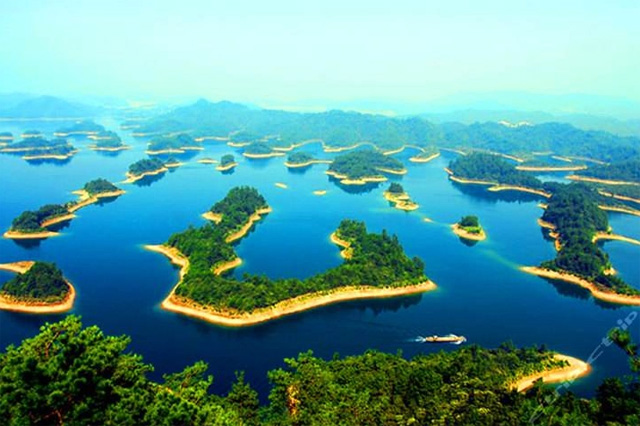
Hangzhou Qiandao Lake Scenic Area, located in Chun'an County, Hangzhou City, Zhejiang Province, is named "Qiandao Lake" because of the continuous high mountains flooded into the lake into 1078 large and small islands ". Hangzhou Qiandao Lake Scenic Area is divided into six tourist areas: Southeast Lake District, Central Lake District, Northwest Lake District, Southwest Lake District, Northeast Lake District, and Hexi Stone Forest. Its main attractions are Meifeng Island, Monkey Island, Longshan Island, Suodao, Santan Island, etc. The lake shape of Qiandao Lake is branch-shaped, with different shapes of large and small islands in the lake, and the distribution of islands is sparse and dense.
5. Wuzhen Ancient Town Tourist Area, Jiaxing City
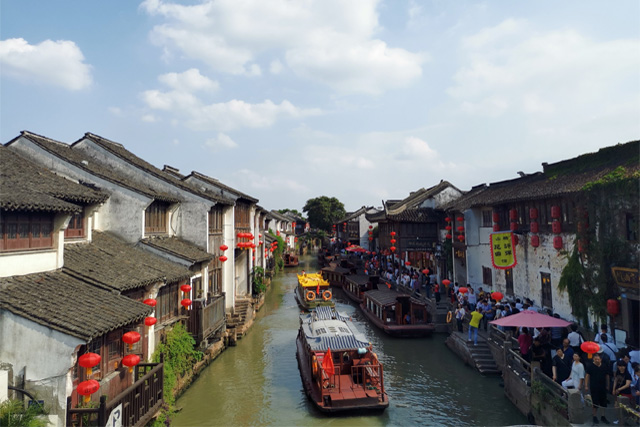
Wuzhen Ancient Town Tourist Area in Jiaxing City is located at No. 18 Shifo South Road, Tongxiang City, Jiaxing City, Zhejiang Province. The cross-shaped inland river system divides the town into four blocks in the southeast, northwest and northwest, which are called "East Gate, South Gate, West Gate and North Gate" respectively. The town covers an area of 79 square kilometers. The ancient names of Wuzhen are Wudun and Wushu. It has a history of more than 7000 years and a history of more than 1300 years. It is a typical ancient water town in the south of the Yangtze River in China. It is known as the "land of fish and rice, the house of silk", and is known as "the last pillow water in China. Family".
6. Ningbo Xikou-Tengtou Tourist Attraction
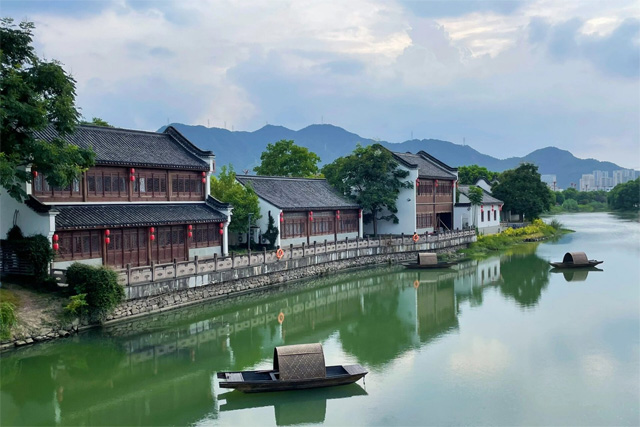
Ningbo Xikou-Tengtou Tourist Attraction, referred to as Xikou-Tengtou Tourist Attraction, is a tourist attraction located in Fenghua District, Ningbo City, Zhejiang Province. It is mainly composed of Xikou Xuedou Mountain Scenic Area and Tengtou Tourist Attraction. It is a national AAAAA-level tourist attraction. The scenic spot has many categories and large scale. It gathers high-grade tourism resources with national first-class and world influence, such as the culture of the Republic of China, Maitreya culture, landscape culture, and ecological culture. It has extremely high historical and cultural value and viewing and recreation value.
7. Hengdian Film and Television City, Jinhua City
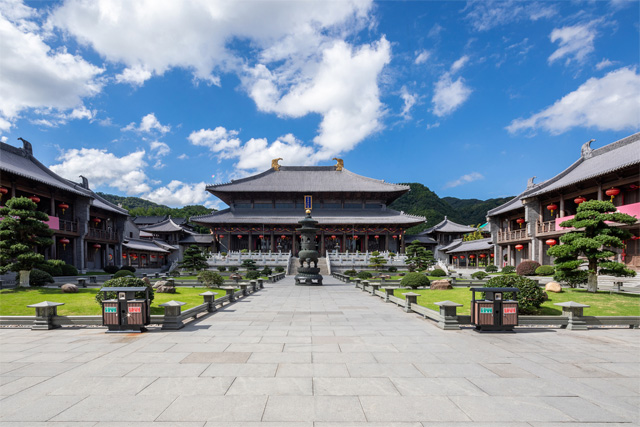
Hengdian Film and Television City, located in Hengdian Town, Dongyang City, Jinhua City, Zhejiang Province, is the largest film and television experience resort in China. Founded in 1996, it is known as "Hollywood in China". Hengdian film and television base covers a total area of more than 50000 mu, covering more than 30 film and television shooting bases spanning thousands of years of history and time and large-scale modern drama buildings. It has more than 100 class A (film grade) and B (TV grade) studios, with more than 2000 scenes of ancient costume, age and modern and contemporary film and television shooting, It is a large-scale comprehensive tourist area integrating film and television, tourism, vacation, leisure and sightseeing.
8. South Lake Tourist Area of Jiaxing City
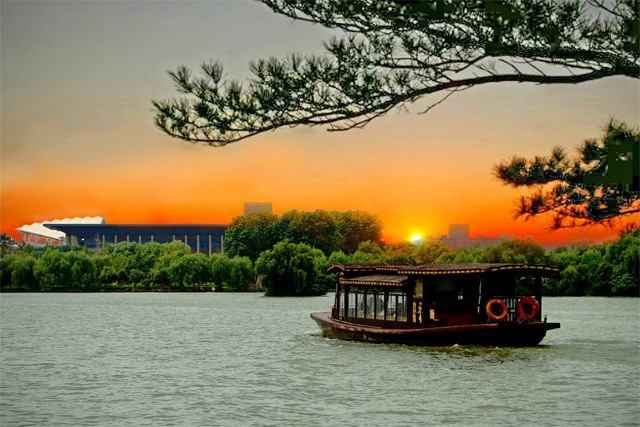
Jiaxing Nanhu Tourist Area, referred to as Nanhu Tourist Area, is located in Nanhu Street, Nanxi Road, Nanhu District, Jiaxing City, Zhejiang Province. Jiaxing South Lake is named because it is located in the south of Jiaxing. It is called the three famous lakes in the south of the Yangtze River along with Nanjing Xuanwu Lake and Hangzhou West Lake. Nanhu is an important revolutionary memorial site in the modern history of our country. The Nanhu Revolutionary Memorial Hall is located on the shore of Nanhu Lake in Jiaxing City. It is a revolutionary memorial hall built to celebrate the closing of the First National Congress of the Communist Party of China in Nanhu.
9. Hangzhou Xixi National Wetland Park

Zhejiang Hangzhou Xixi National Wetland Park is located at the junction of Xihu District and Yuhang District, Hangzhou City, Zhejiang Province. It is less than 5 kilometers away from the West Lake and has a planned total area of 11.5 square kilometers. The total length of rivers in Xixi National Wetland Park in Hangzhou, Zhejiang Province is about 100 kilometers, of which about 70% of the area is river ports, ponds, lake ripples, swamps and other waters. The wetland park is rich in ecological resources, elegant natural landscape and profound cultural accumulation. It is called "Three West" of Hangzhou together with West Lake and Xiling ". Zhejiang Hangzhou Xixi National Wetland Park is the first national wetland park in China that integrates urban wetlands, agricultural wetlands and cultural wetlands.
10. Lu Xun's Hometown in Shaoxing City-Shen Yuan Scenic Area
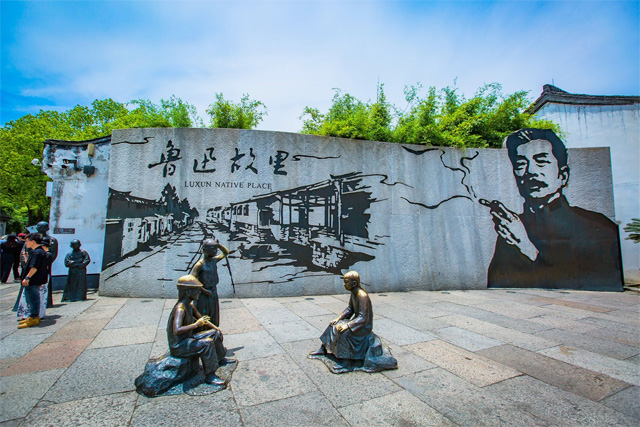
Lu Xun's hometown · Shen Yuan Scenic Area in Shaoxing City, referred to as Lu Xun's hometown · Shen Yuan Scenic Area, is a tourist attraction located in Yuecheng District, Shaoxing City, Zhejiang Province. It consists of Lu Xun's hometown scenic area and Shen Yuan scenic area. The core area of Lu Xun's hometown contains a lot of historical and cultural information related to Lu Xun and Lu Xun's culture. Lu Xun's former residence, Lu Xun's ancestral residence, Sanwei Bookstore and other national key cultural relics protection units are well-known. Shen Garden, also known as Shen's Garden, was originally a private garden of Shen's family, hence the name. Shen Garden is a famous garden in Shaoxing and a provincial-level cultural relic protection unit in Zhejiang Province. It has three relatively independent and distinctive gardens, namely, Historic Area, East Garden and South Garden.
11. Quzhou Gengong Buddhist Cultural Tourism Zone
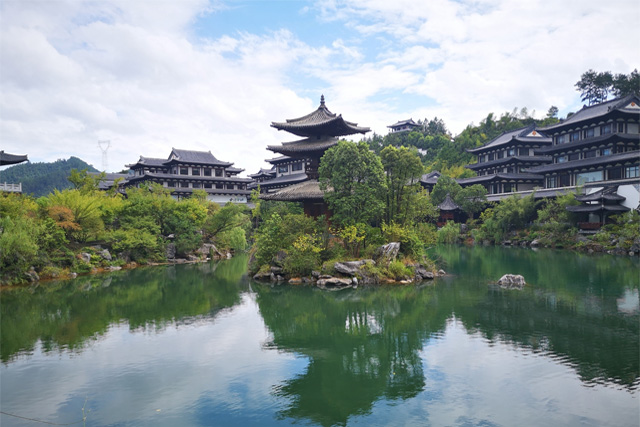
Quzhou Gengong Buddhist Cultural Tourism Area, referred to as Gengong Buddhist Cultural Tourism Area, is located at No. 1 Genbo Road, Kaihua County, Quzhou City, Zhejiang Province. It covers an area of 3.03 square kilometers and is a landscape garden scenic spot. Gengong Buddhist Cultural Tourism Zone to bonsai, stone, root art, garden ancient architecture to form a quiet and comfortable, harmony between man and nature of the picture. The scenic spot includes nearly 30 scenic spots such as Fumen Xiangguang, Yunhu Zen Heart, Tiangong Museum, Root Carving Buddha Kingdom, and Zui Root Pagoda. It displays more than 20,000 pieces (sets) of large-scale root carving art series and more than 3,000 pieces of bonsai art works. It is a new world cultural heritage.
12. Nanxun Ancient Town Scenic Spot, Huzhou City
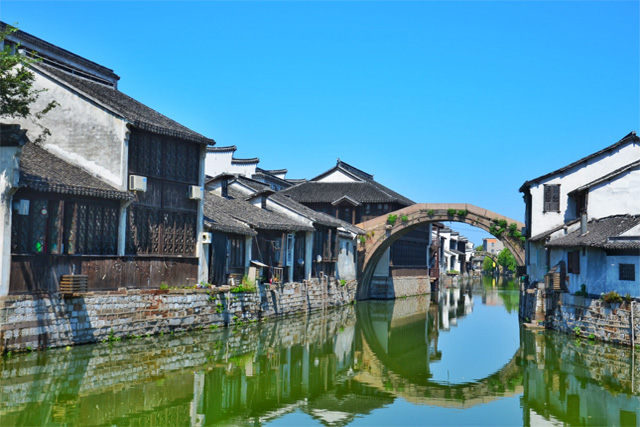
Nanxun Ancient Town is located in Nanxun District, Huzhou City. It is an ancient town in the south of the Yangtze River with sufficient cultural resources and a combination of Chinese and Western architecture. It is a national 5A-level tourist attraction. Nanxun has been an important economic and cultural town in Huzhou since ancient times. It has been famous for producing high-quality raw silk since the Song Dynasty. During the Ming and Qing Dynasties, Nanxun became a typical silk town in the south of the Yangtze River. The ancient town of Nanxun is known as the "state of culture" and the "hometown of poetry and books". There have been many famous figures, such as Zhang Jingjiang, a wonder of the Republic of China, Zhang Shiming, one of the founders of Xiling Seal Society, and Xu Chi, a famous poet and essayist.
13. Taizhou Tiantai Mountain Scenic Area

Taizhou Tiantai Mountain Scenic Area is located at No. 1 Hehe Street, Tiantai County, Taizhou City, Zhejiang Province. It is located at the junction of Ningbo, Shaoxing, Jinhua, and Wenzhou. It is connected to Xianxia Ridge in the southwest and Zhoushan Archipelago in the northeast. It is the watershed between Cao'e River and Yongjiang River, with many hanging rocks, cliffs and waterfalls. Tiantai Mountain is famous for its "the source of Buddhism and the beauty of mountains and rivers". It is one of the birthplaces of Zen Buddhism and has a long history of Buddhist culture, during which a number of famous Buddhist cultural celebrities and historical and cultural heritages have emerged. Tiantai Mountain is an important ecological barrier in Zhejiang Province, which plays an important role in maintaining regional ecological balance.
14. Taizhou Shenxianju Scenic Spot
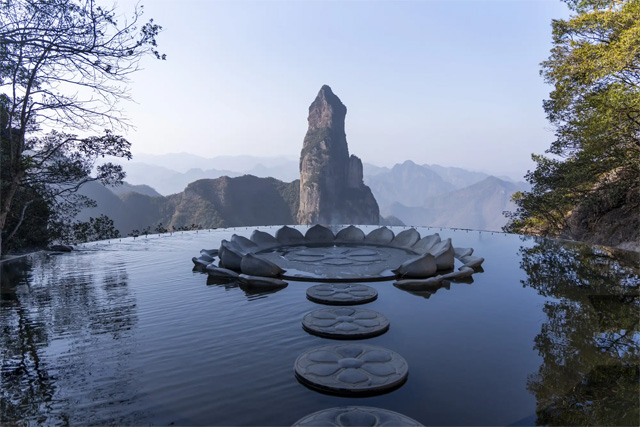
Taizhou Shenxianju Scenic Area, formerly known as Xipu Temple Scenic Area, is located in Xianju National Park, Danzhu Township, Baita Town, Xianju County, Taizhou City, Zhejiang Province. The ancient name of Shenxianju is Tianmu Mountain, also known as Weiqiang Mountain. It belongs to the Cuocang Mountain system, the main peak is Daqinggang, and the altitude is 1271 meters. Its human history can be traced back to the late Tang Dynasty. Shenxianju scenic area has unique geological landform, which is famous for its majestic, steep, strange rise, deep, beautiful and mysterious. The territory has strange peaks and dangerous cliffs, cliff sinkholes, flowing springs and waterfalls, clouds, seas and fog, jungle, and a myriad of scenes, forming a magnificent and dreamlike landscape picture.
15. Tourist Attractions of Xitang Ancient Town, Jiaxing City
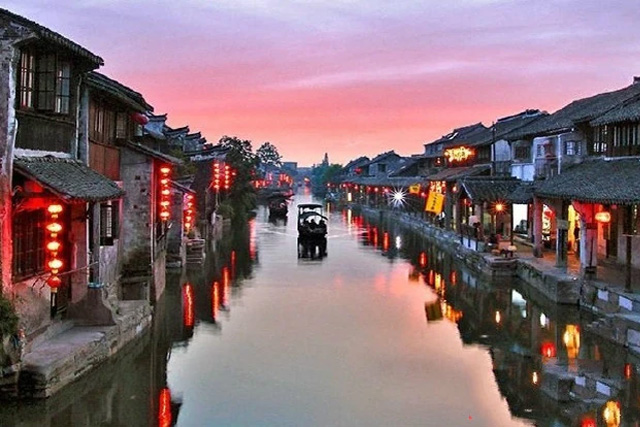
Xitang Ancient Town is located in Jiashan County, Jiaxing City, Zhejiang Province. It is an ancient town with a thousand years of history and culture and a national AAAAA-level tourist attraction. Xitang has a long history. It is one of the birthplaces of ancient Wuyue culture and one of the six ancient towns in the south of the Yangtze River. It is a thousand-year-old water town of Wu local culture. During the Spring and Autumn and Warring States period, it was the border between Wu and Yue, known as "Wu Gen Yue Jiao" and "Yue Jiao Family. Xitang is famous for its many bridges, many ways and many corridors and sheds. It is a base for experts to study the culture of Jiangnan water towns. Artists depict the net land of Jiangnan folk culture and tourists enjoy the scenic spots of Jiangnan tourism culture.
16. Ningbo Tianyi Pavilion · Yuehu Scenic Area
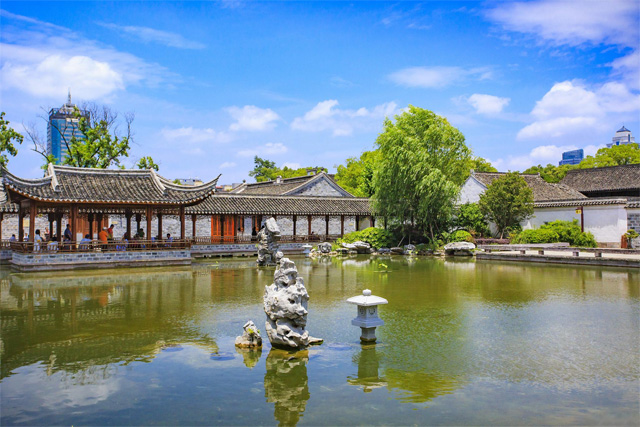
Tianyi Pavilion Yuehu Scenic Area in Ningbo, referred to as Tianyi Pavilion Yuehu Scenic Area, is located at No. 92 Changchun Road, Haishu District, Ningbo City, Zhejiang Province. It is an AAAAA-level scenic spot in Haishu District, Ningbo City. Tianyi Pavilion · Moon Lake Scenic Area is composed of Tianyi Pavilion Museum and Moon Lake, with a total area of about 1 square kilometers. The scenic spot is rich in historical resources and profound cultural heritage. There are more than 50 cultural relics protection units and sites at all levels, and 3 national key cultural relics protection units.
17. Guyan Painting Township Tourist Resort, Lishui City
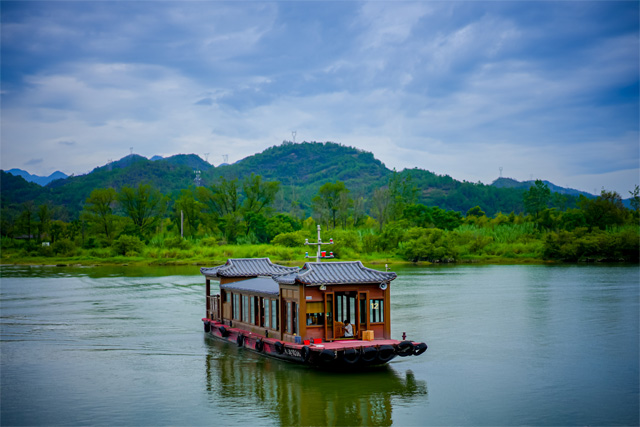
Guyan painting Township tourist Resort is located at the junction of Bihu Town and Dagangtou Town, Liandu District, Lishui City, Zhejiang Province, with profound cultural heritage and well-preserved ecological rivers. it is a national ecological demonstration area. it is the main creation base of the first "hometown of Photography" named by the Chinese photographers Association and the Chinese Barbizon oil painting base, which can be regarded as the epitome of "Xiushan Lishui" and a model of "Landscape Zhejiang. Guyan painting township tourist resort, by the songyin river side of the ancient village of tongjiyan and longquanxi middle reaches of the ancient town of dagangtou. The characteristic town of Guyan Painting Township Tourism Resort mainly includes two parts: Guyan and Painting Township.
18. Liu Bowen's Hometown Scenic Spot, Wenzhou City
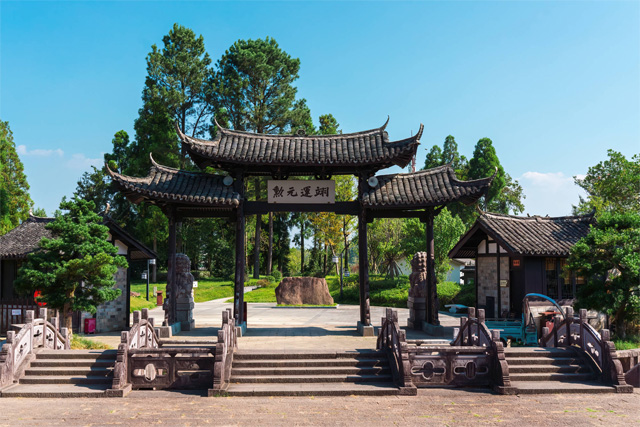
Liu Bowen's hometown scenic spot in Wenzhou city, referred to as Liu Bowen's hometown scenic spot for short, is located in wencheng county, Wenzhou city, Zhejiang province, with a total area of 4.81 square kilometers and consists of two core scenic spots, Liu ji temple and baizhangyi. With beautiful ecological environment, profound cultural heritage, rich folk customs and distinctive regional characteristics, it is a comprehensive tourism and leisure vacation destination with cultural and natural landscape. Liu Bowen (Liu) was a politician, writer and military strategist in the late Yuan Dynasty and early Ming Dynasty. He was famous for his integrity and integrity. Liu Jimiao and Baizhangluo are not only important places to remember historical figures, but also important windows to display the culture and natural scenery of the Ming Dynasty.
19. Jinyun Xiandu Scenic Area, Lishui City

Lishui Jinyun Xiandu Scenic Area, referred to as Jinyun Xiandu Scenic Area, is located in Xiandu Street, Jinyun County, Lishui City, Zhejiang Province. It was named after Tang Xuanzong Li Longji exclaimed that "it is really the capital of immortals" and took advantage of the word "Xiandu" in the imperial book. With a total area of 5.23 square kilometers, the scenic spot consists of five major scenic spots: Dinghu Peak, Little Chibi, Xiandu View, Niweng Cave and Zhu Tanshan. Jinyun Xiandu Scenic Area is known as "Guilin's show, Huangshan's strange, Huashan's dangerous" reputation. The scenic spot has a single stone pillar "the first bamboo shoot in the world" Dinghu Peak; the volcanic eruption channel site "Lingxudong"; the Yellow Emperor Temple "the first Temple in the World" of the Yellow Emperor Sacrifice Center in southern China; the national intangible cultural heritage "Jinyun Xuanyuan Sacrifice"; the national key cultural relics protection unit "Xiandu Cliff inscription".
20. Huiji Mountain Scenic Area, Shaoxing City
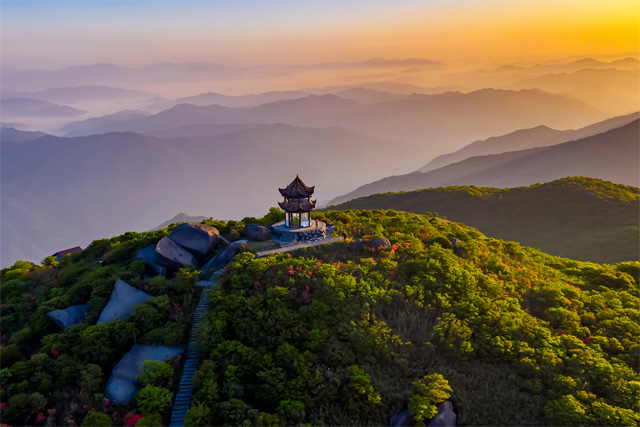
Huiji Mountain, formerly known as Maoshan and Miaoshan, also known as Mu Mountain, Fangshan, Zhenshan, Kuobusan and Wanweishan, is located on the second Ring Road East, Yuecheng District, Shaoxing City, Zhejiang Province. It is named after Dayu's flood control meeting here. According to records, Kuaiji Mountain was the place where Dayu, a water-control hero in ancient China, was married, counted meritorious service and buried. Huiji Mountain has a long-standing reputation in history. It integrates Dayu culture, Yue culture, religious culture, landscape culture and product culture. It is one of the important birthplaces of Chinese civilization. It was once the first of the nine famous mountains in ancient China and the first of the "five towns" in China. Nanzhen is an important birthplace of Chinese landscape poetry, as well as the origin of Chinese agricultural civilization and the inheritance of farming culture.
21. Hangzhou Liangzhu Ancient City Ruins
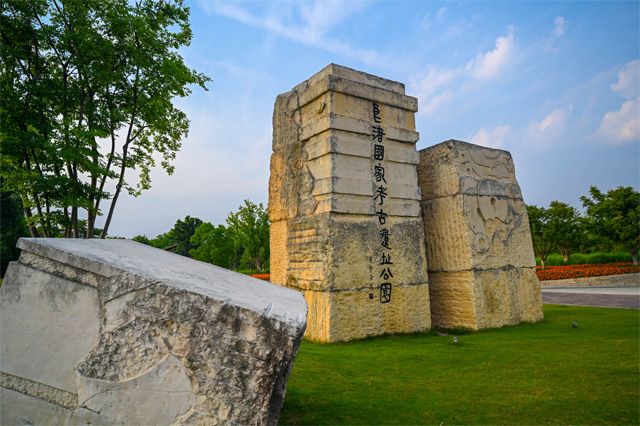
The site of Liangzhu ancient city is known as "the first city in China". The water conservancy system around Liangzhu ancient city is the earliest large-scale water conservancy project in China and the earliest dam in the world. Liangzhu ancient city is the power and belief center of a regional early country around Taihu Lake in the lower reaches of the Yangtze River in China. Liangzhu Culture has an extensive and far-reaching influence on the development of Chinese civilization in the next five thousand years. It can be demonstrated that the development characteristics of Chinese civilization-pluralistic integration, and it is truly and completely preserved. It is an outstanding representative in the history of human civilization. Large prehistoric settlement sites in East Asia.
22. Jinhua Shuanglong Scenic Area
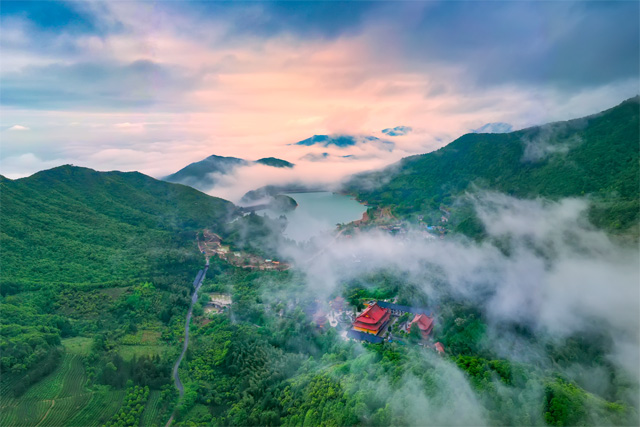
Jinhua Shuanglong Scenic Tourism Zone is located at the foot of Jinhua Mountain in the northern suburb of Jinhua City, Zhejiang Province. It is a national AAAAA-level tourist attraction and a national forest park. There are six scenic spots in Shuanglong Cave, Wong Tai Sin, Jianfeng Mountain, Daitian, Chisong Mountain and Jiayuan. It is a "holy land of three religions, a blessed land of immortals and a fertile land of celebrities" integrating Confucianism, Buddhism and Taoism ". The tourist area has rich karst landform landscapes and large-scale karst cave groups. The rock caves in the territory are unique, and the karst landform is well developed. There are more than 50 karst caves and a number of underground rivers in the 25-kilometer-long belt limestone layer., An underground lake, has been known as "Five Lakes and Ten Views" since ancient times. Double dragon lying boat, curling waterfall, the true appreciation of the stone has always enjoyed the "world three unique" reputation.
This article is edited and published by Journey Mark. If you have any questions, please feel free to contact us at any time.
Article Link:https://www.topvvv.com/en/China/113.html

